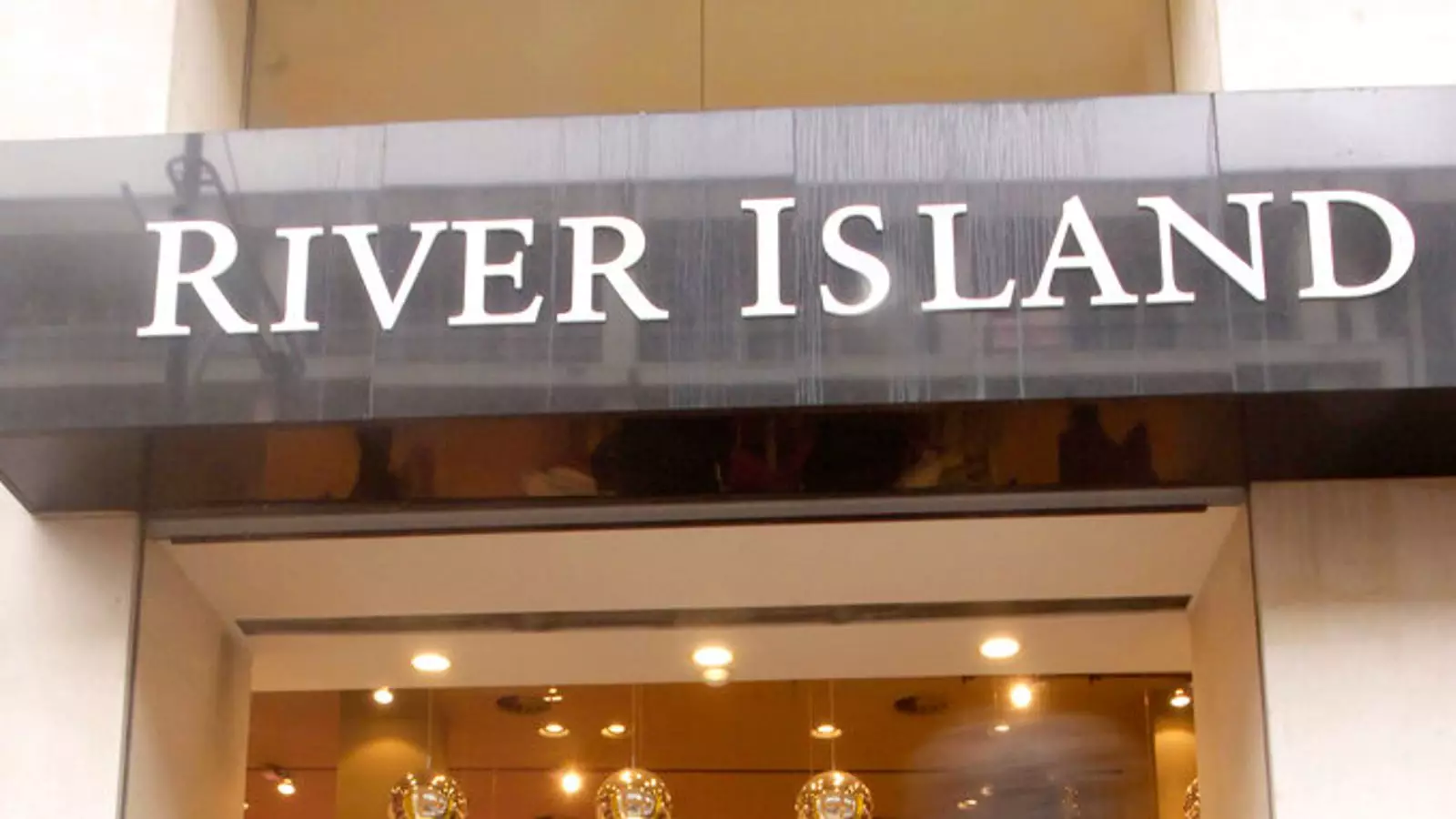The recent turmoil surrounding River Island, a staple of British retail, reveals the disturbing reality of a fashion industry grappling with unprecedented challenges. With the family behind the brand orchestrating a push towards a drastic restructuring plan, the fate of numerous stores and the livelihoods of thousands hang in the balance. As the brand’s owners enlist advisors from PricewaterhouseCoopers (PwC), this move underscores a desperate attempt to navigate stormy waters that threaten to engulf one of the nation’s beloved clothing chains.
River Island’s journey, which began in 1948 as Lewis and Chelsea Girl, exemplifies the struggle many well-established retailers now face. Although the brand underwent transformation and rebranding over the decades, its current predicament is reflective of an industry that finds itself at a crossroads. With a staggering pre-tax loss of £33.2 million, and a revenue drop exceeding 19%, it raises essential questions about the sustainability and future of high street fashion.
Shifting Consumer Preferences and Economic Headwinds
The retail environment in which River Island operates is shifting faster than many can adapt. The company’s warning about “multiple financial and operational risks” is a testament to the realities of a market where customer preferences lean increasingly towards convenience, diversity, and speed. E-commerce is not just an alternative; it is becoming the norm, and brands that fail to adapt may find themselves irrelevant.
Moreover, as River Island acknowledges, the impact of geopolitical events is rippling through supply chains, leading to inflationary pressures that result in diminished consumer confidence. The mention of rising energy, labor, and food costs reflects broader economic uncertainties that are squeezing budgets at all levels. These factors, combined with an intense digital competition, create an arduous landscape for a retailer trying to maintain relevance in a rapidly evolving marketplace.
Restructuring: A Double-Edged Sword
A restructuring plan, while potentially a lifeline, also bears the risk of dismantling what once made a brand great. The very term “restructuring” evokes images of store closures and severed jobs—painful decisions that affect lives and communities. For River Island, which employs roughly 5,500 people and operates around 230 stores, the weight of such decisions cannot be overstated. An industry already witnessing a wave of closures, from Prezzo to Hobbycraft, now faces the harsh reality that giants can fall, too.
The choice to pursue a court-supervised restructuring indicates a dire situation. It speaks not just to financial distress, but also a lack of agility and foresight in adapting to market changes. River Island’s management, by prioritizing short-term remedial measures over long-term strategic innovation, risks leaving the brand vulnerable to further challenges. This reactive approach often fails to address the root causes of distress that need urgent attention.
The Role of Government and Economic Policy
The current government policy landscape adds another layer of complexity to River Island’s existential crisis. The tax changes introduced by Rachel Reeves in last autumn’s Budget have sparked frustration among retailers grappling with mounting operational costs. Businesses like River Island are not merely passive players in this scenario; they are active participants in a larger economic ecosystem that is struggling to sustain itself amid convoluted legislative frameworks.
With several notable chains seeking new ownership and others nearing insolvency, it becomes abundantly clear that the government plays a critical role in ensuring economic stability and support for the retail sector. Without adequate governmental intervention, the risk of a cascading failure among high street brands poses significant implications for employment and the broader economy.
River Island stands at a fork in the road, teetering on the edge of oblivion. While the looming restructuring plan embodies a fight for survival, it serves as a cautionary tale for retailers who may not yet realize the depth of their challenges. If significant shifts are not implemented with both urgency and creativity, the narrative of this once-great brand may soon be one of nostalgia rather than resilience. Amidst the chaos, however, there is an opportunity to rethink, innovate, and possibly emerge stronger, although the window for such transformation is rapidly closing.


Leave a Reply